New Tax Credit Rules Are Squashing Sales of America’s Best EV
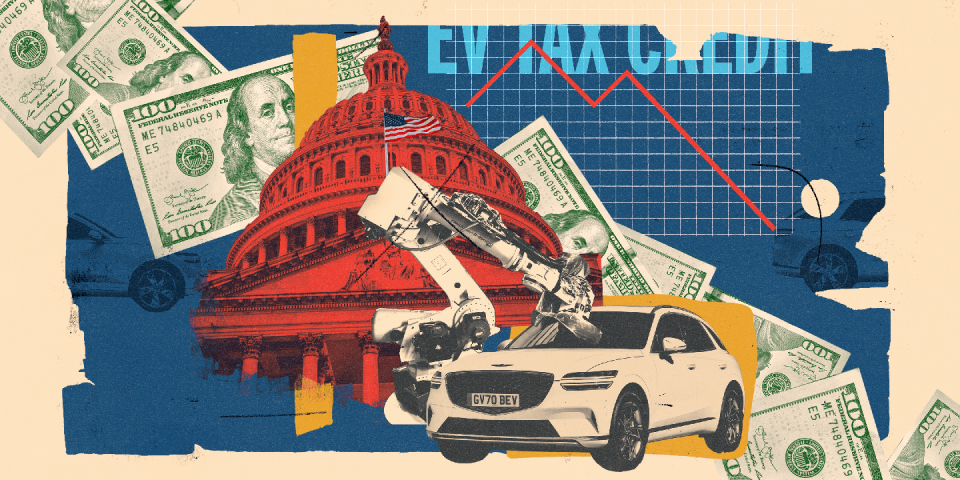
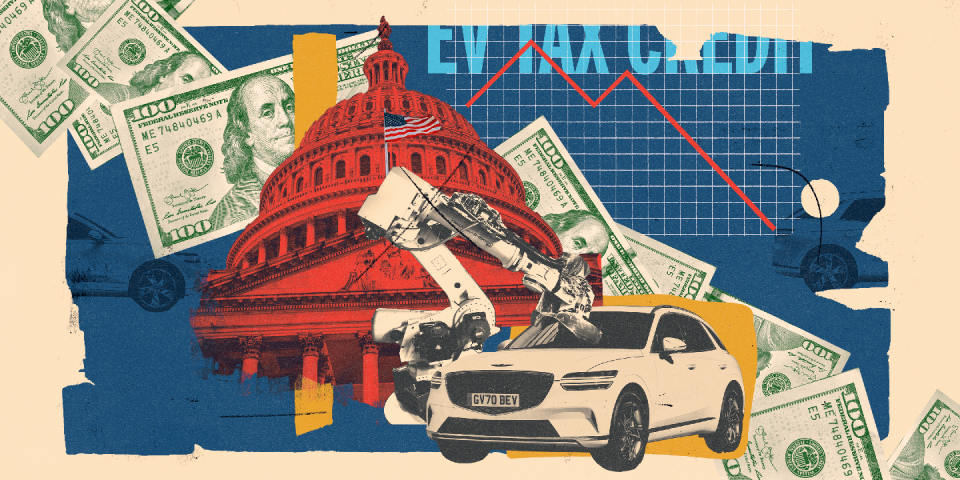
For Hyundai Motors, the recent New York Auto Show should have been a victory lap. With José Muñoz, chief executive of Hyundai and Genesis Motor North America serving as beaming emcee, the Ioniq 6 sedan — now America’s longest-ranging, most energy-efficient mainstream EV — swept the 2023 World Car of the Year awards, for Best Car, Design and EV. Hyundai unveiled a smartly redesigned 2024 Kona, including an electric version.
Kia floated the 2024 EV9, which will become the market’s first three-row electric SUV from a non-luxury brand, an affordable alternative to a Tesla Model X, Mercedes EQS SUV or Rivian R1S. The Genesis GV70 Electrified is trickling into showrooms from a Hyundai factory in Alabama. This, after the Hyundai Ioniq 5 and Kia EV6 won seemingly every car award in sight last year.
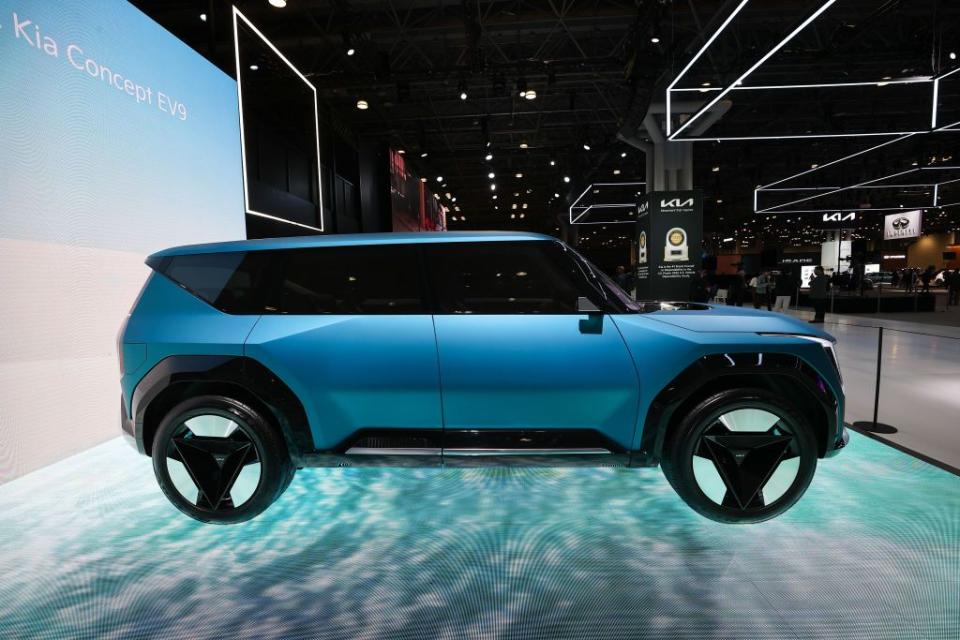
“On a roll” barely describes the momentum of Hyundai, now the world’s third-largest automaker, trailing only Toyota and Volkswagen. But Muñoz wasn’t all smiles in New York, thanks to federal rules that have made every Hyundai, Kia and Genesis EV ineligible for consumer tax credits — along with every foreign-built EV from Nissan, Toyota, BMW, Mercedes, Audi, Volvo and Polestar. The big winners are Tesla, General Motors, Ford and even Volkswagen, with their head starts in ramping up EV and battery production in America.
Hyundai’s Spanish-born executive and nuclear engineering PhD must feel like America uncorked the nuclear option. Hyundai’s South Korean-built models now face a $7,500 disadvantage versus key rivals, including the Tesla Model Y and most Model 3’s. Without slashing prices to match — a virtual impossibility, Muñoz said, for an automaker that hopes to earn profits — the rules already appear to blunt Hyundai’s EV momentum.
“It is unfair,” Muñoz said in an interview near Hyundai’s show stand. “And it’s a significant obstacle to achieve our objectives, for a company that’s clearly shown a commitment to an electrification strategy.”
That $10.5-billion commitment includes $5.5 billion for a Hyundai EV factory near Savannah, Ga. Hyundai is now scrambling to open the car factory ahead-of-schedule by 2024, and ultimately bring 8,100 jobs.
“All we can do is invest and pull ahead the timing for compliance,” he said. “But it’s difficult to be more committed than three plants and $10.5 billion.”
Last week, the company finalized details of a $5 billion battery plant in Bartow County, Ga., in tandem with South Korea’s SK On. Slated to open in 2025, the 35 gigawatt-hour plant could crank out enough batteries for 300,000 Hyundai, Kia and Genesis EVs annually. Hyundai is in talks with LG Energy over two domestic battery plants, with enough annual capacity for up to 1 million EVs.
Yet for Hyundai and other foreign automakers, these opening onshoring bids are for naught. Despite South Korea President Yoon Suk Yeol serenading President Biden at a White House dinner last week with a rendition of “American Pie,” Hyundai’s home-baked plans aren’t fresh enough to earn a penny of credits. (President Yoon, who almost surely expressed his displeasure to Biden in private, might have tried a few bars of “North American Scum” by LCD Soundsystem).
In August, the Biden administration’s Inflation Reduction Act required that, to earn consumer credit, an EV or PHEV must be built in the United States, Canada or Mexico. On April 18, the green-velvet rope got tighter, thanks largely to Sen. Joe Manchin III of West Virginia, who withheld his critical support unless the IRA imposed strict domestic content restrictions on EVs. Eligible EVs must now source and assemble an increasing percentage of battery components in North America, and a growing share of battery minerals from the U.S. or approved trade partners — a list that notably does not include China or Russia.
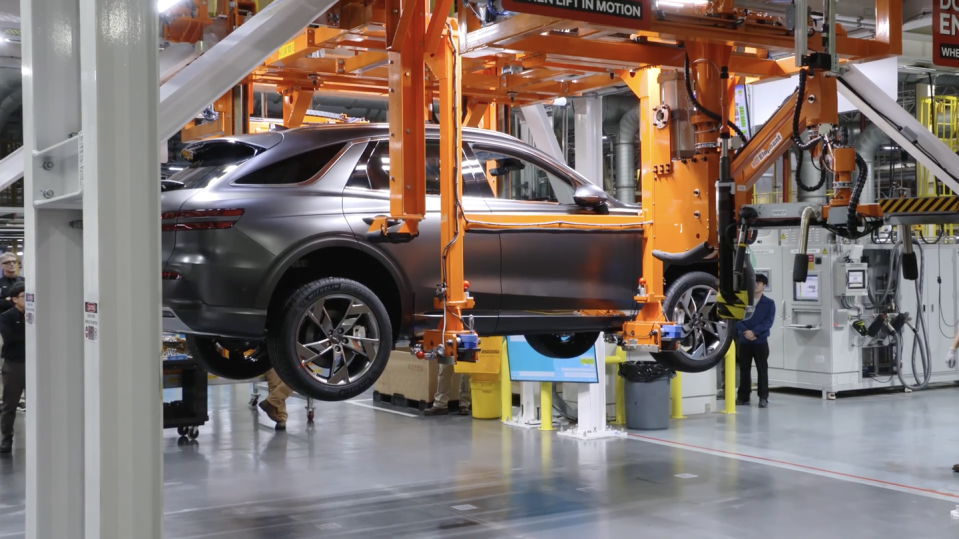
So much for the GV70 Electrified. In March, I watched Genesis’ first American-made model roll of an assembly line in Alabama. On the final workstation of a 16-hour assembly journey, a robotic vehicle glided beneath the Genesis, bearing the scarlet-letter component that makes the GV70 ineligible for credits: A battery pack imported from South Korea.
Automakers and analysts alike praise the multi-pronged goals of the IRA. In a call, White House and Treasury officials summed up those goals: To spur EV adoption, stem greenhouse gas emissions, jump-start American factories and good-paying manufacturing jobs, and ensure a secure domestic supply chain to blunt China’s concerning dominance of global battery and mineral production. The rules have angered American allies (and competitors) in Europe, Japan and South Korea, sparking accusations of protectionism, albeit in some instances from countries with their own tariffs or trade barriers against U.S. automobiles.
Karl Brauer, executive analyst for iSeeCars.com, argued that Hyundai and other automakers should have been granted a phase-in period to meet the rules.
“Every aspect of the new legislation is on target, except the timing,” Brauer said. “You want to sell more EVs, encourage domestic production, and lessen dependence on China? Love it. But they would have sold more EVs and made more consumers happy if they’d ramped up, instead of saying, ‘Let’s start tomorrow.’”
Peter Knutson, a Brooklyn resident and chief strategy officer for an architectural firm, just missed out on a $7,500 credit on a China-built Polestar2 last fall.
“I do feel we got screwed a bit,” Knutson said. “But the loss of a few thousand dollars is less important than the U.S. focusing on high-quality manufacturing, and the jobs that come with it.”
Knutson said the IRA’s rationale seemed to pivot as it wound toward passage.
“First it was, ‘We want the mass market to see EVs as an economic choice. Then it became the homegrown capacity, parts and assembly. But both are meritorious.”
Under the tightened rules, only 10 EVs qualify for a full $7,500 credit, with the Chrysler Pacifica PHEV kicking that to 11. The Ford Mustang Mach-e earns a half $3,750 credit — not because it’s built in Mexico, but due to battery sourcing requirements. Last week, BMW determined that its American-made 2024 X5 xDrive 50 meets enough critical-mineral requirements to merit a $3,750 credit. Others models limited to a $3,750 break include the Illinois-built Rivian R1T and R1S; the Tesla Model 3 Standard Range with its China-sourced LFP battery; and PHEVs from Jeep, Ford and Lincoln. Digging deeper reveals slim pickings for folks who’d like to cross-shop eligible EVs: Six of the 10 full-credit models on the EPA’s list are from GM. Three of those aren’t on sale yet: Chevy’s electric Silverado, Blazer and Equinox.

Another two are the budget-conscious Bolt and Bolt EUV. Those Chevys have found the bargain basement booming, surging to model-record sales on the back of $7,500 credits that can cut their base price to as little as $20,000. Oops: Barely a week after the government confirmed the generous breaks, GM announced it will halt Bolt production this year. Not for the first time, GM will kill off a model just when things are looking up. Chevy now plans to produce about 70,000 Bolt models this year, despite its lame-duck status.
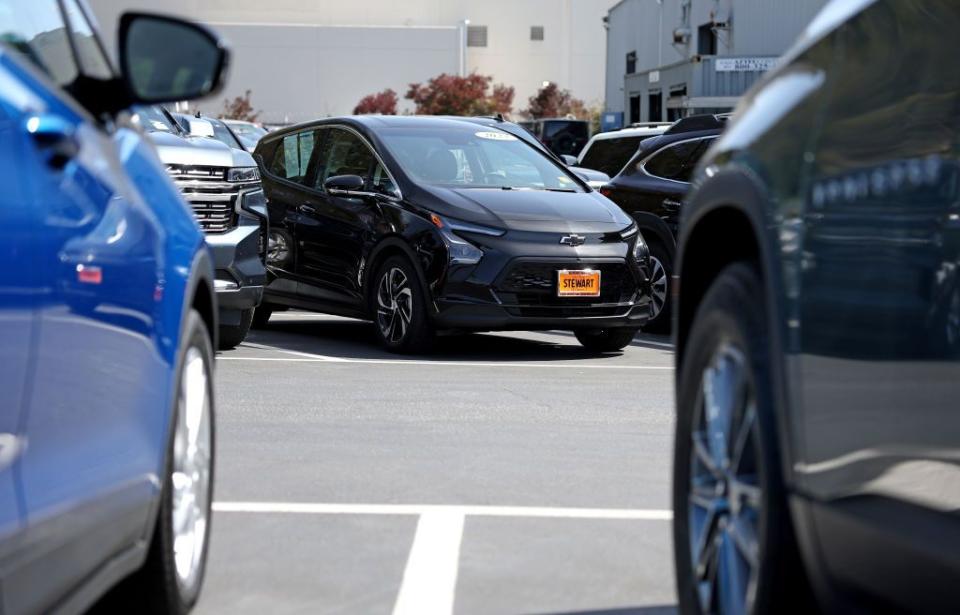
Then there’s the Cadillac Lyriq, of which Cadillac managed to deliver a grand total of 968 units in the first three months of 2023. That leaves the Ford F-150 Lightning — itself struggling to ramp up production — Volkswagen’s Tennessee-built ID.4, and Tesla’s Model Y and 3. On the surface, that’s not many financial carrots to dangle for consumers. And while plug-in prices have fallen slightly, spurred by Tesla’s price cuts, an EV still cost $58,940 on average in March, nearly $11,000 more than a typical new car, according to Kelley Blue Book.
While new rules are shaking up the market, and could crimp EV sales in the short-term, they will ultimately bring a wave of American-built models and batteries that earn credits, said Chris Harto, senior policy analyst for Consumer Reports. Since the IRA’s passage alone, automakers and suppliers have announced more than $45 billion in EV and battery investment in America.
“The rule is having its intended effect, getting manufacturers to adjust their supply chains,” Harto said. “And EV demand is so far ahead of supply that it’s more likely to affect dealer markups and profitability for companies that are transitioning.”
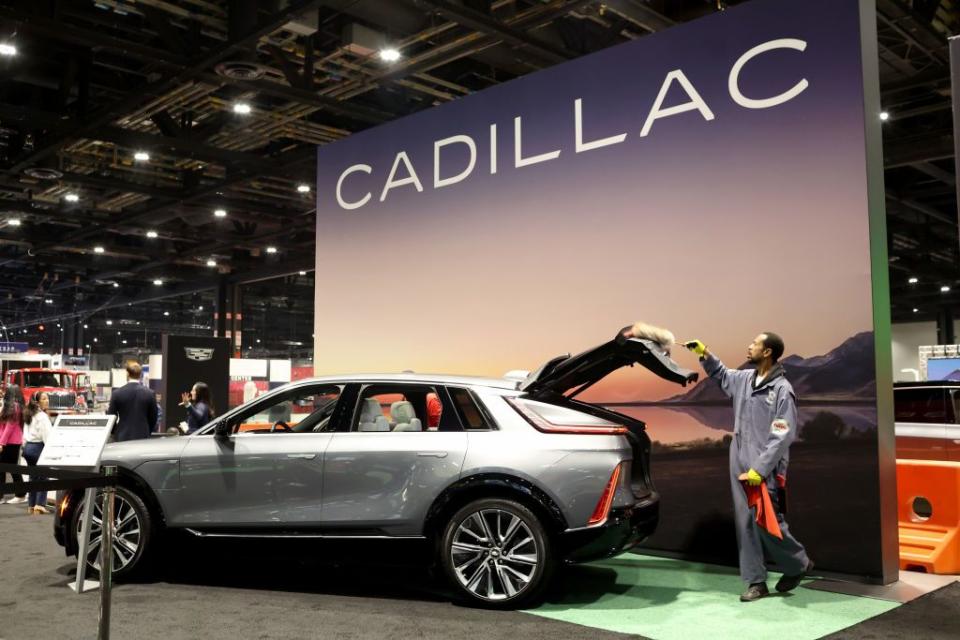
Harto said losing credits will likely give dealers less wiggle room to tack on huge markups over MSRP — including for scarce models like the Hyundai Ioniq and Kia EV6 — and essentially pocket credits. In a Cars.com survey of nearly 1,000 consumers, 80 percent of current EV shoppers said tax credits are driving their consideration. More than half of current EV owners said they received between $1,000 and $5,000 in credits and incentives.
The reliable American impulse to save a buck seems to be taking a bite out of Hyundai sales, just as Muñoz feared. In the first quarter of 2022, Hyundai and Kia sold more than 19,000 EVs, more than Ford, Nissan, Audi, BMW, Mercedes and Lucid combined. Through March of this year, even as EVs soared to a record 7.2-percent of the U.S. market — and Hyundai and Kia set another American sales record overall — the brands’ EV sales tumbled a respective 26 and 31 percent, to fewer than 14,000 units, according to Kelley Blue Book. Ford’s electrified models, mainly the Mach-e and Lightning, saw sales surge 41 percent to nearly 11,000 units, surely boosted by tax breaks.
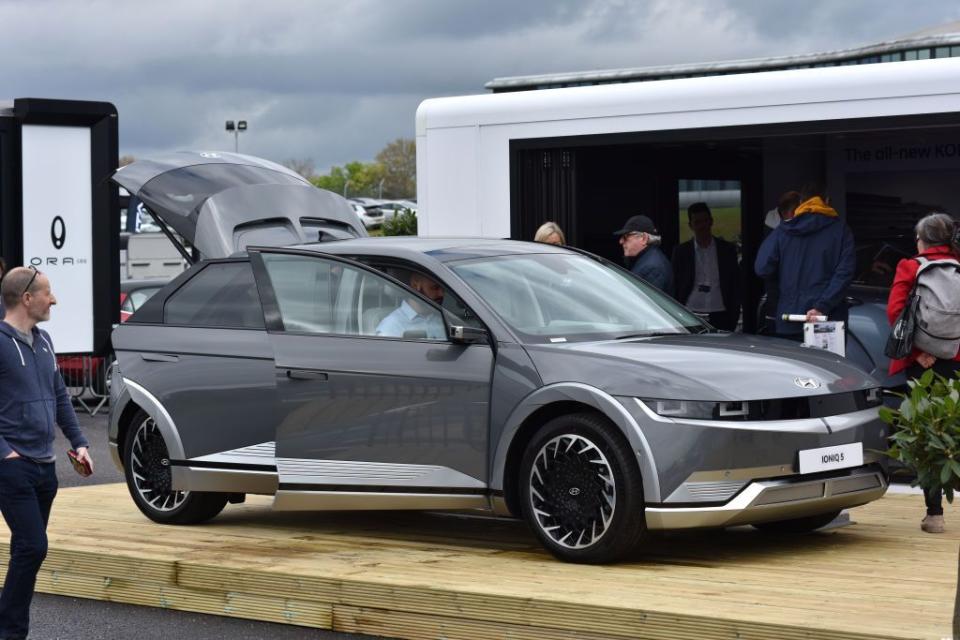
For EV fans trying to unlock a good deal, there’s one get-out-of-jail free card: Leasing. The new law offers a commercial clean-car leasing credit, aiming to spur adoption by rental car companies, government vehicles and other fleet buyers. So under Internal Revenue Service rules, any individual can lease any EV — no matter where it’s built, how much it costs, or what foreign materials are in its battery bloodstream — and take the full $7,500 credit.
For buyers, the IRA sets new income thresholds to receive credits, including $300,000 for a married couple, and base price caps of $55,000 for electrified passenger cars and $80,000 for SUVs and pickups. (There’s also a credit of up to $4,000 for used EVs. And starting in January, buyers can take credits at the point-of-sale, rather than having to wait to file federal taxes, a practical and psychological boost for Americans who hate both tax returns and math).
But for lease customers, none of that applies: Brands including Hyundai, Kia, Volvo, Polestar, BMW and Mercedes, shut out of buyer credits, are aggressively trumpeting cash-back deals of up to $7,500 on leases, passing the commercial credit to consumers. Raise a stein to Germany, and their pricey luxury EVs: A wealthy car fan can lease, say, a German-built Porsche Taycan Turbo S, and get $7,500 off its $195,000 price.
For people on mortal budgets, the lease credits can bring pricey EVs much closer to reach. Using familiar auto-financing math, a $7,500 discount could reduce monthly payments on a three-year lease by about $220, or closer to $120 on a five-year lease.
Consumers are getting the financial message. In September, after the IRA’s passage, only 7 percent of consumers leased an electric car, according to Edmunds.com data. By March, that lease percentage shot to 34 percent. Muñoz confirmed Hyundai is taking full advantage, though he cautioned that not every retail customer can be converted to a lease.
The Treasury department takes issue with the newly coined phrase “leasing loophole.” Department officials said the law was intentionally designed to promote EV adoption via leasing, including through car dealers and automakers’ finance arms that pass commercial credits to individual lease customers.
Unsurprisingly, some automakers and lawmakers feel otherwise. They insist the leasing provision is a handy way for foreign automakers to skirt rules on domestic content, or for wealthy customers to get tax breaks that the income caps were specifically meant to prevent. Tesla has criticized the leasing provision, as have Toyota and General Motors. Joe Manchin has blasted the proposed rules, which are still under a public-commentary period. Manchin said the IRA was meant as “first-and-foremost an energy security bill,” designed to grow domestic manufacturing and reduce reliance on “foreign adversaries” and their supply chains and minerals.
Manchin has now upped his denouncement of Biden's EV policies, including historic proposed EPA emissions rules that would be phased in beginning in 2027. Speaking to the U.S Chamber of Commerce on April 18, Manchin made clear where he stood on the legislation he had a critical role in passing.
“I never wanted to give the electric vehicles 75-cents’ credit, let alone $7,500," Manchin said.
Democrats counter that the administration is following the law as intended, balancing dual goals of making EVs more affordable while boosting U.S. manufacturing and jobs.
“Almost all of us who voted for this legislation and contributed to it wanted to supercharge EV sales,” said Rep. Jared Huffman (D-Calif.) in a Politico interview. “Clearly Sen. Manchin did not. He thought he was maybe sabotaging the EV industry. And it’s driving him nuts that it’s not working out that way.”
Political wrangling aside, leasing is clearly rewriting the EV rules at car dealerships. Kevin Reilly, owner of Alexandria Hyundai in Virginia, and chairman of the Hyundai National Dealer Council, affirmed that EV lease business is booming at his store. And Reilly believes Hyundai’s award-hogging EVs can remain competitive in the market, with or without credits.
Reilly pointed to specific advantages for EV leasing. Anxious first-timers can see if an EV fits their lifestyle and driving habits with no long-term commitment, or worry about resale value and long-term battery life. If they love the car, they can always keep it. Harto added with EV technology rapidly advancing, and a wider selection and supply on the horizon, lease customers can hedge their bets.
“EVs are getting better every year, so a three-year lease isn’t the worst way to go,” Harto said.
You Might Also Like

 Yahoo Autos
Yahoo Autos 